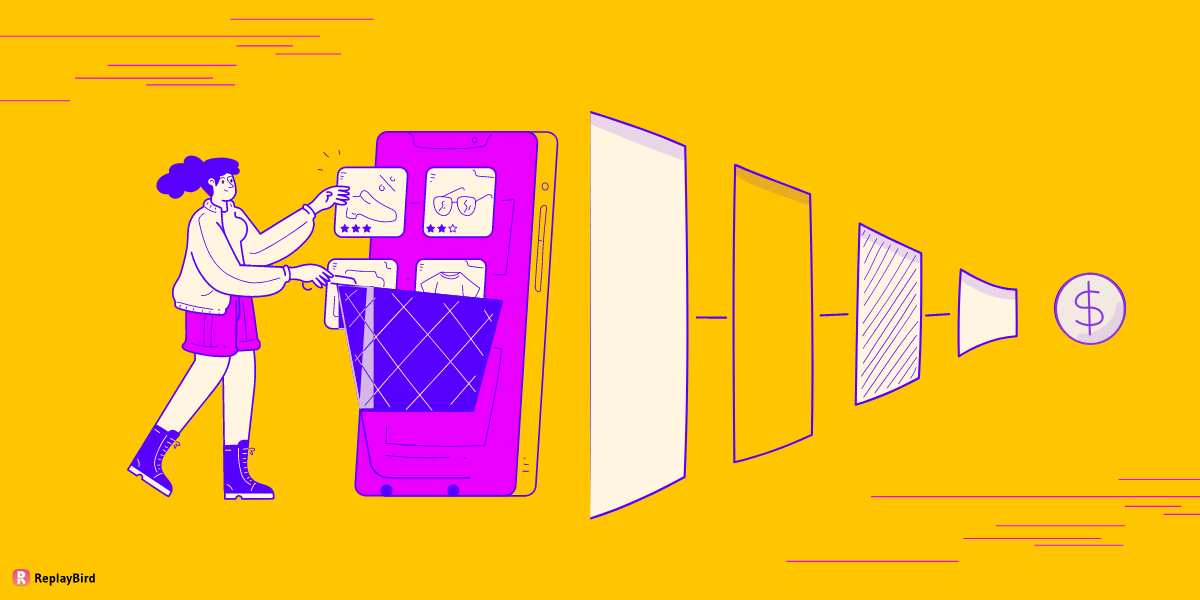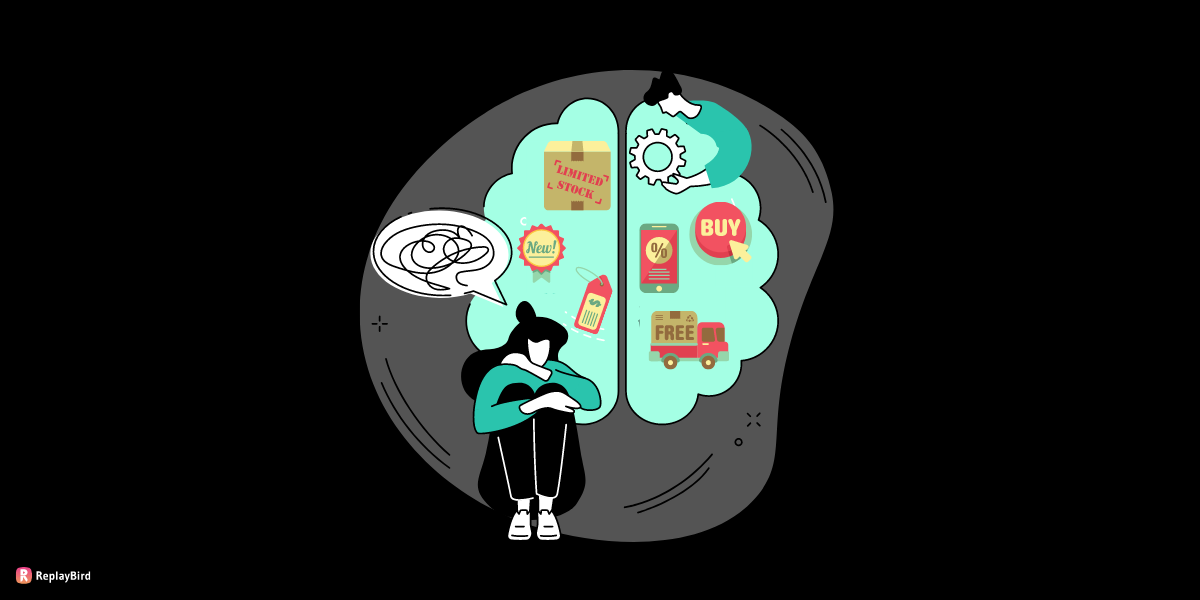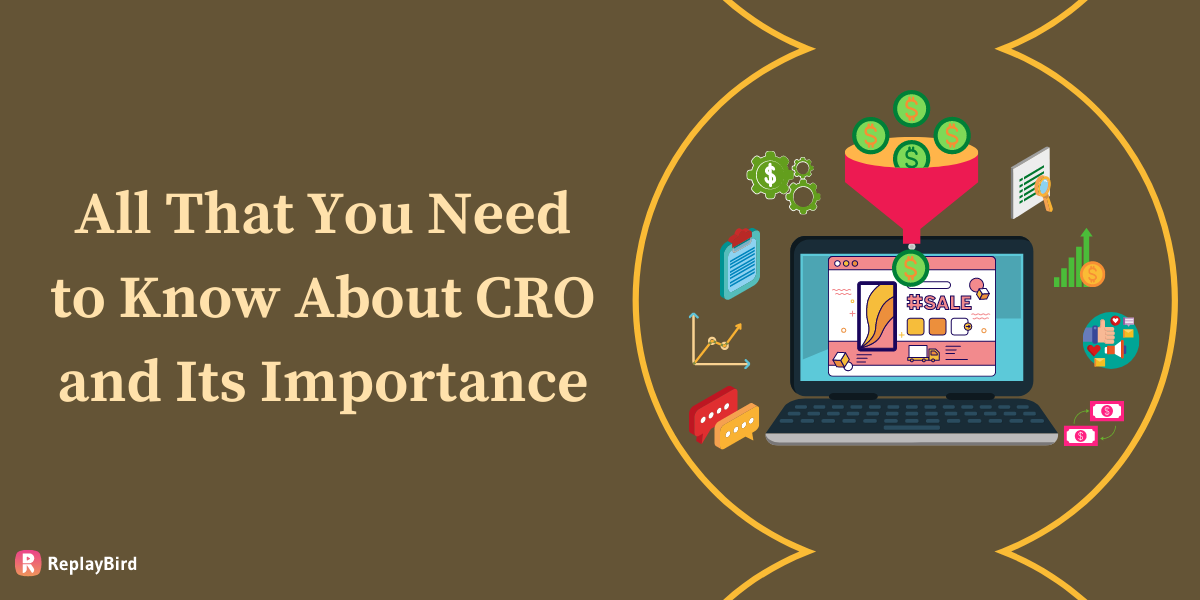Increasing conversion rate stands as a cornerstone for success, as its process of converting potential leads into active customers is the important part of any business. However, merely executing marketing strategies is not enough; understanding their impact is equally important too.
This is where conversion tracking comes into play. It takes up a lot of techniques designed to monitor and analyze user actions, with real-time insights into the effectiveness of marketing efforts.
Measuring conversions let you to understand which marketing channels, campaigns, and content resonate most with their audience.
This identification of high-performing strategies and areas that may require refinement and moreover, tracking conversions helps in the allocation of resources towards the most avenues and optimization.
Here are the topics that we will cover in this blog:
- What is a Conversion Rate?
- Analytics in Conversion Optimization
- 6 Analytics You Need to Increase Conversion Rate
- 8 Key Metrics for Conversion Optimization
What is a Conversion Rate?
A conversion rate tells you how effective your website or marketing efforts are at turning visitors into action-takers. Picture this: if you have a website selling cool sneakers, a conversion happens when a visitor goes from just browsing to actually buying a pair.
In more technical terms, a conversion rate is the percentage of visitors who complete a desired action, like purchasing, signing up for a newsletter, or filling out a contact form. This metric is decisive for any online business.
Let's say you get 100 visitors a day, and 10 of them make a purchase. Your conversion rate is 10%. The higher this rate, the better! It means your website is doing a great job at convincing people to take the action you want them to.
Types of Conversions:
Micro-conversions are like the little steps to your big win in conversion! They're the small but oh-so-important steps that users will take on your website. Think of actions like signing up for a newsletter, adding items to a wishlist, or watching a demo video. These actions might seem small, but they're a signal that your audience is engaged and interested.
Macro-conversions, on the other hand, macro-conversions are the main event! They're the ultimate goal you have in your mind for your business, like making a purchase, submitting a contact form, or signing up for a premium service. These are the conversions that directly impact your bottom line and help your business grow.
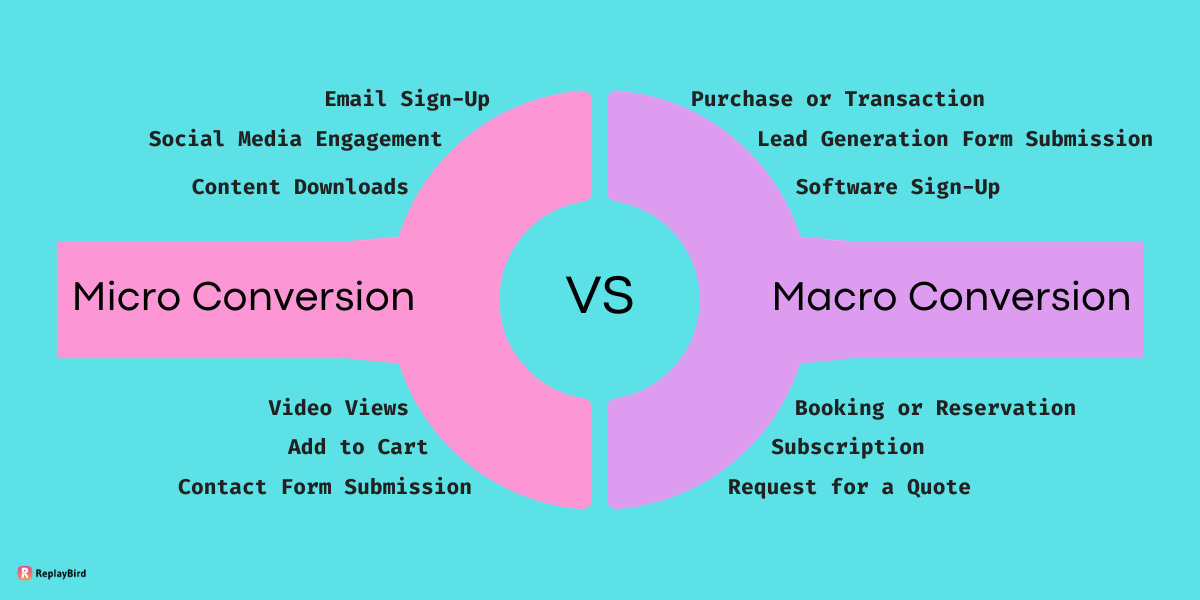
So, when you're tracking conversions, it's important to pay attention to both micro and macro as they both work hand-in-hand to drive your business forward.
Difference Between Micro-Conversions and Macro-Conversions
| Aspect | Micro-Conversions | Macro-Conversions |
| Definition | Small actions or engagements that indicate user interest and intent, but may not directly lead to revenue. | Key actions that directly contribute to business objectives and generate revenue. |
| Examples | Email sign-ups, adding items to a cart, downloading a free resource, watching a demo video. | Product purchases, service subscriptions, form submissions, trial sign-ups. |
| Impact | Indirect impact on the bottom line. They nurture leads and move users along the conversion funnel. | Directly impact revenue and business growth. They are the primary goals of a website or campaign. |
| Conversion Rate Metric | Typically higher conversion rates as they are easier for users to commit to. | Conversion rates are typically lower as they represent significant user commitment. |
| Funnels and Segmentation | Micro-conversions are often used in earlier stages of the conversion funnel to build trust and engagement. | Macro-conversions are usually the ultimate goal at the end of the conversion funnel. |
| Optimization Focus | Improve user engagement, build trust, and nurture leads towards macro-conversions. | Focus on optimizing the entire user journey towards completing a macro-conversion. |
Importance of Tracking increasing Conversions
Tracking increasing conversions provides insights into customer behavior which will help in optimizing strategies, and maximizing ROI. Here are the top 5 benefits and reasons on why you need to track conversions.
1. Understanding User Behavior
Tracking conversions provides invaluable insights into how visitors interact with your website, as you'll know which pages they visit, what actions they take, and where they drop off. These insights help you understand user behavior patterns and preferences for you to tailor your website to meet their needs effectively.
By comprehending how users navigate your site, you can identify pain points, optimize user flows, and ensure a seamless experience. Let’s say a significant number of users abandon their carts on the checkout page, which signals a potential problem that needs to be addressed as you uncover insights on your checkout page.
2. Evaluating Marketing Campaign Effectiveness
Imagine running a race blindfolded. That's what it's like without conversion tracking for your marketing efforts. Tracking conversions lets you measure the success of your marketing campaigns as you'll understand which campaigns are driving actual results and which ones may need adjustments.
Even in multiple ad campaigns on different platforms, conversion tracking lets you identify which platform delivers the highest return on investment (ROI), as this allocates resources more effectively, maximizing your marketing budget and efforts.
3. Optimizing User Experience
User experience is the major part of a successful website. Conversion tracking helps you fine-tune this experience to perfection as it highlights areas where users engage the most and those that need improvement.
For instance, conversion tracking merged with heatmaps and session replays gives you visual insights into where users click, scroll, and spend the most time. This data helps you optimize page layouts, calls-to-action, and content placement for higher conversions. By focusing on what resonates with your audience, you create a more engaging and satisfying experience, ultimately leading to increased conversion rates.
4. Identifying High-Impact Pages and Content
Not all pages are built equal as some hold the key to your conversion success. Through conversion tracking, you'll identify high-impact pages - those that drive the most conversions. These could be product pages, landing pages, or specific blog posts that resonate strongly with your audience.
By recognizing these pages, you can distribute more resources towards their optimization and promotion. This targeted approach lets you maximize the potential of your highest-converting content, ultimately driving more conversions across your site.
5. Making Informed Business Decisions
Tracking conversions provides you with concrete, data-backed insights to guide your strategic choices.
For example, if you're considering a website redesign, conversion tracking data can inform your decisions on which elements to prioritize. You'll know which pages and features are crucial for driving conversions, for any business to make changes that have a direct impact on their bottom line.
Analytics in Conversion Optimization
Analytics guides you to higher conversion rates! Analytics tools like Google Analytics and Mixpanel provide data about your website's performance.
You can uncover invaluable insights about user behavior, like where they come from, what they do on your site, and where they drop off, as it lets you make informed decisions. You can pinpoint which pages or steps need improvement and where your visitors are already loving what you offer.
Analytics turns guesswork into precision. By understanding what's working and what needs modifications, you can adjust and plan your strategies for maximum impact.
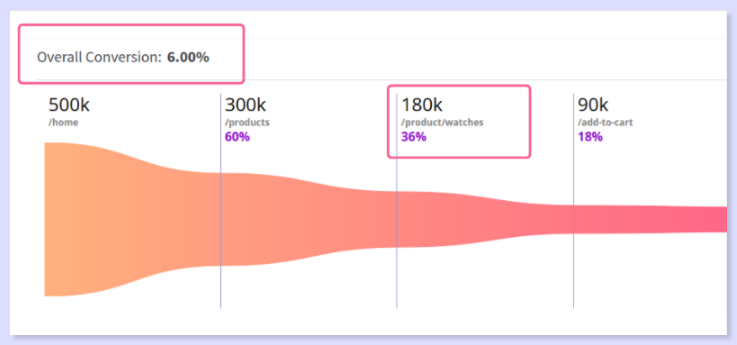
How to Implement Analytics to Increase Conversion Rate with ReplayBird?
ReplayBird provides detailed insights into user behavior, revealing which elements on your website attract attention and which are overlooked. By understanding user interactions, you can optimize page layouts, CTAs, and content placement for maximum impact. Heatmaps and session replays visually depict user engagement, guiding strategic adjustments.
Conversion funnels highlight where users drop off, enabling targeted improvements. Additionally, Form Analytics identifies fields causing friction, streamlining the conversion process.
With ReplayBird's real-time monitoring, you can swiftly adapt to emerging trends, creating a seamless and compelling user experience that drives higher conversion rates.
Firstly, you will need to sign-in into ReplayBird
Step 1: Begin by navigating to the menu bar and selecting "Install Agent".
Step 2: Here, you'll discover your unique, ready-to-use snippet code. Simply copy it to your clipboard.
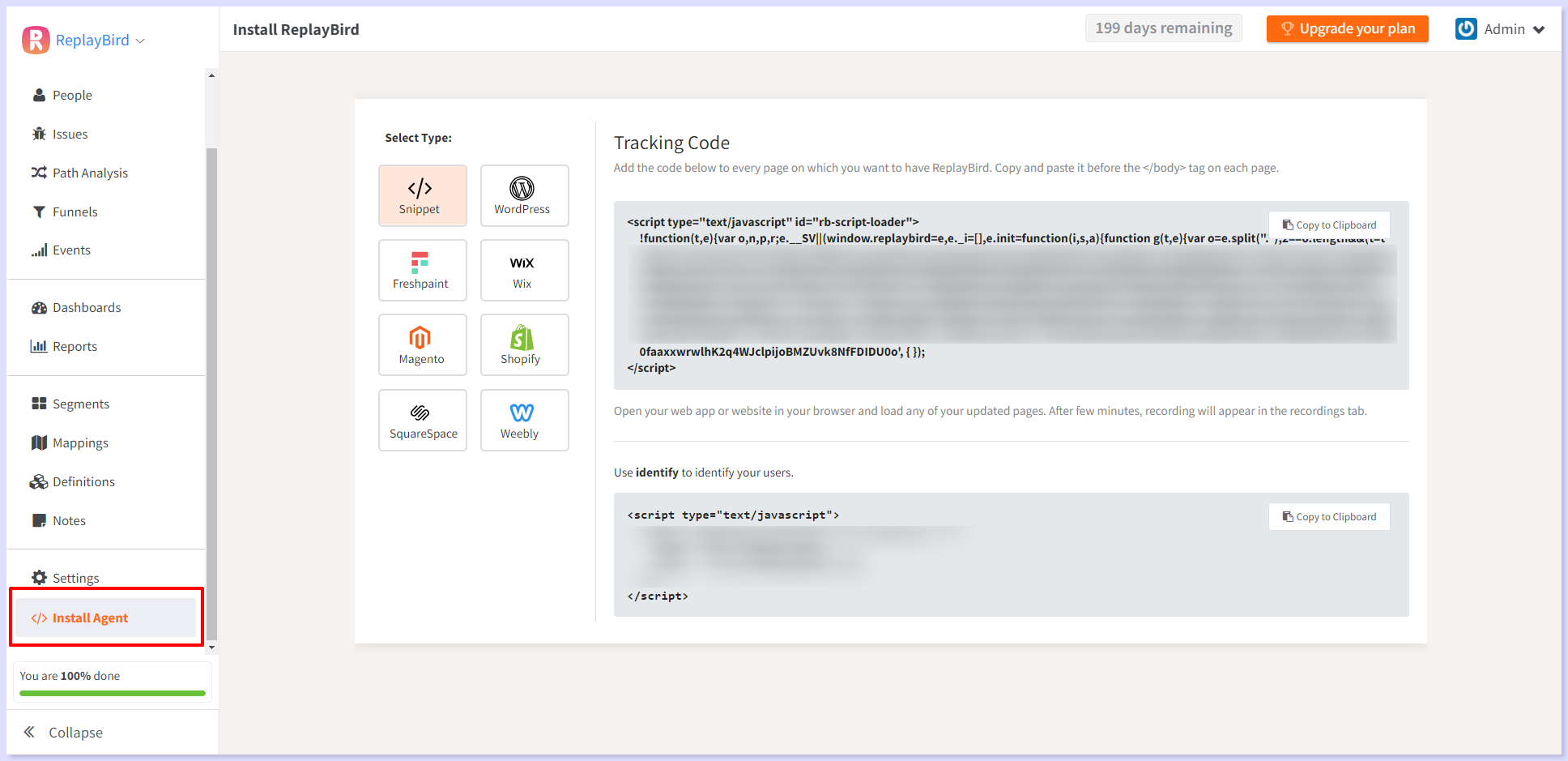
Step 3: Integrate the copied code into your HTML site for seamless tracking and data collection.
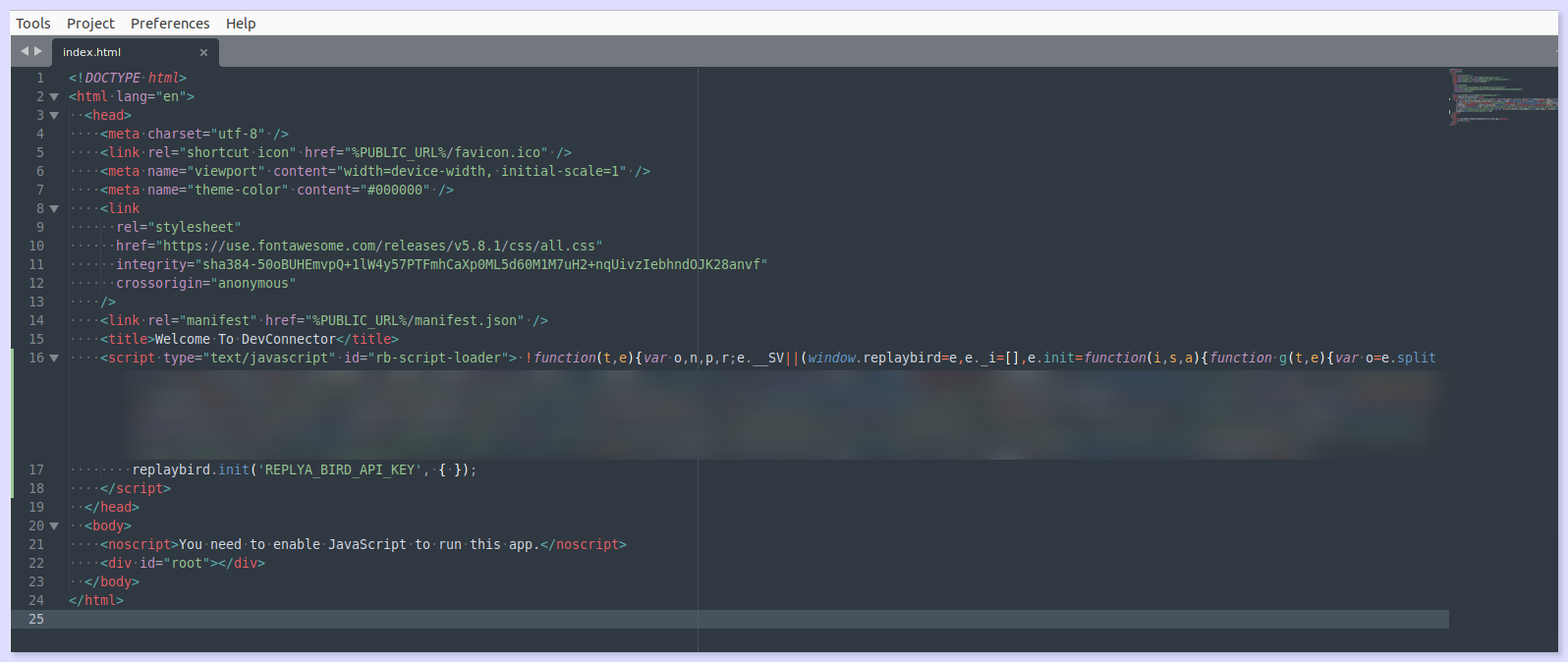
That's it you are good to go now with analytics tool ready to analyse and imporve your website's conversion rate
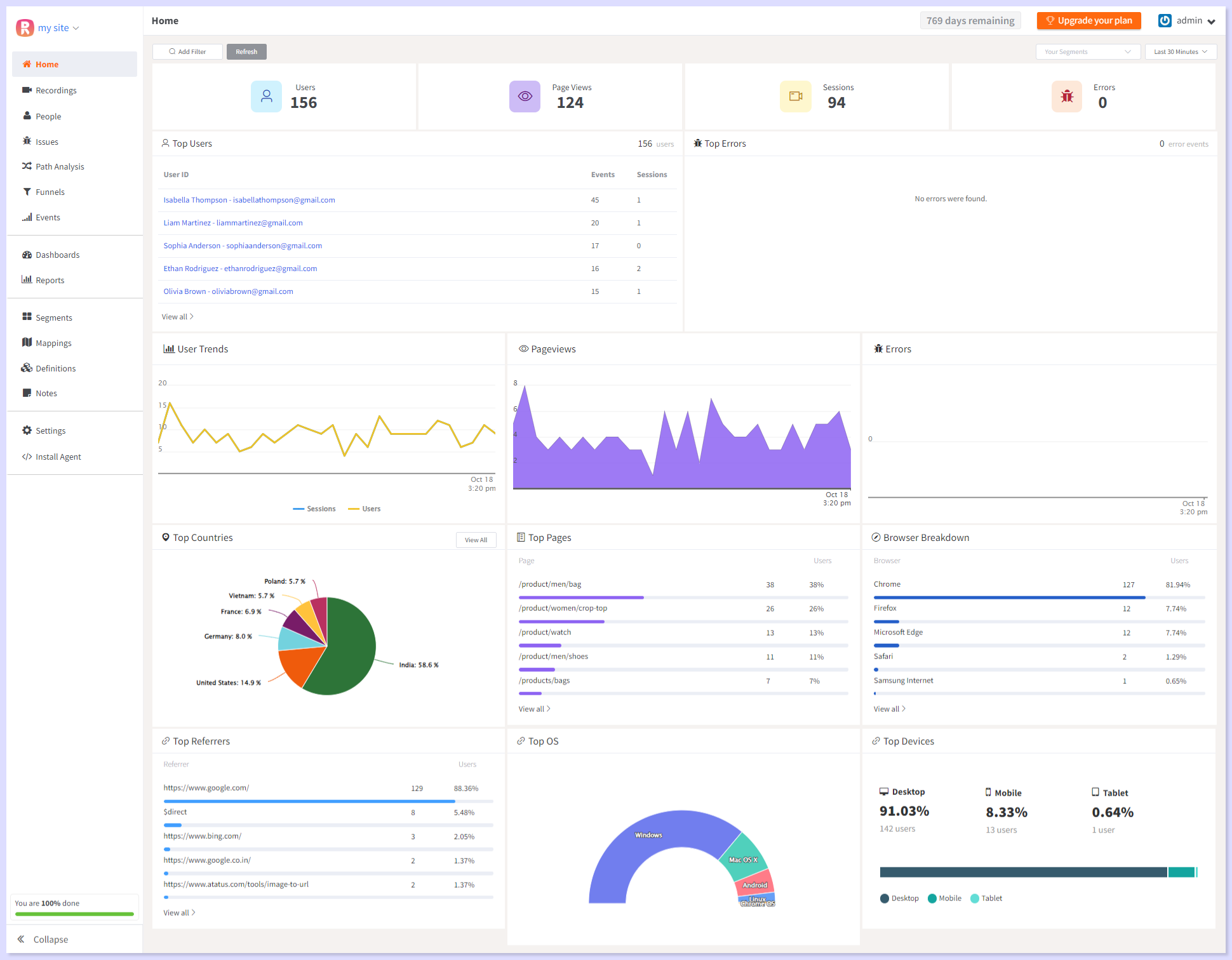
Wait for your analytics tool to collect data, after installation after some serious time, you will be over flowed with all your website conversion data.
It may look like this after some days of installation:
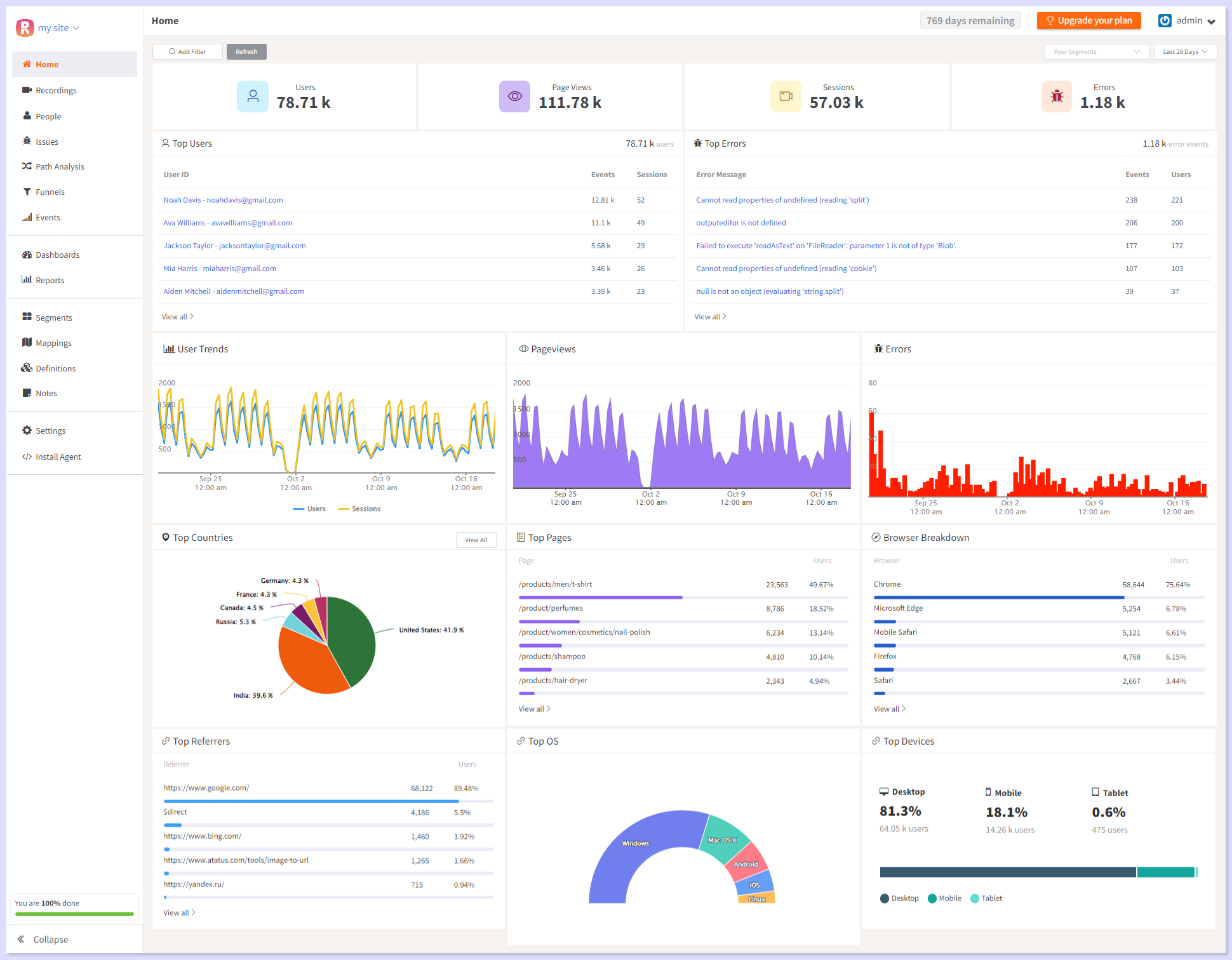
6 Analytics You Need to Increase Conversion Rate
Customer experience analytics offers a range of features to help improve conversion rates. Here are some of the key features and how they can contribute to increasing conversions:
- Session Replay: You can record and replay user sessions as it provides visual playback of exactly how visitors interact with your website which allows you to identify user behavior patterns, uncovering potential barriers to increase conversion.
- Heatmaps: They provide a visualizion of your user engagement by showing where visitors click, scroll, and spend the most time on your site. This information is invaluable for optimizing page layouts, calls-to-action, and content placement which obsoutely leads to higher conversion rates.
- Conversion Funnels: Setting up a conversion funnel set up to create and monitor how visitors are falling into your conversion funnel, which track the steps users take from entry to conversion. Analyzing this data helps identify drop-off points and areas where optimization can be applied to improve the conversion path.
- Form Analytics: By analyzing form interactions you can identify fields that cause friction for users which streamlines and optimizes forms that lead to higher completion rates for important conversion actions like sign-ups or purchases.
- Error Detection: Errors play a significant role in losing customers by reducing the conversion rate. Automatic identification with a error analyzing and tracking tool alerts you to user-facing errors and technical issues on your website. Resolving these issues promptly ensures a smoother user experience and can prevent potential drop-offs in the conversion process.
- Customer journey analysis: Customer journey analytics tracks and analyzes the various touchpoints and interactions a customer has with a business across different channels and stages of their journey. This includes interactions through a website, mobile app, social media, email, customer support, and more which help to understand which pages visitors are dropping-off.
8 Key Metrics for Conversion Optimization
Top key metrics that you have to keep note of to make informed decisions, refine conversion targeting, and ultimately drive revenue growth in a sustainable and efficient manner.
1. Bounce Rate
Analyzing Bounce Rate is like gettinga deep understanding into your website's first impression from your visitor's point of view. It tells you if visitors are sticking around or quickly leaving as they have encountered some kind of off stuff, which can be irrelevent page, does not like it, mistakes with content, image and more.
A high Bounce Rate often signals that something on your page isn't quite hitting the mark - maybe it's slow loading, unclear, or not what they expected. By understanding and improving Bounce Rate, you keep visitors engaged, guiding them towards the actions you want them to take, ultimately boosting your conversion
rates.
2. Conversion Rate
Analyzing Conversion Rate tells you how many visitors turn into customers or take desired actions. A high conversion rate means your website is super effective at convincing people to do what you want, like making a purchase or signing up. By keeping an eye on this metric, you'll know what's working and where to fine-tune.
Calculate your Conversion Rate for Free
3. Average Session Duration
Analyzing Average Session Duration is like understanding how long your visitors are staying on your website, as the metrics reveal how much time users spend exploring your site.
A longer duration often means they find value and engage with your content. By studying this metric, you can improve user experience, as they stick around and are more likely to convert. Pay attention to session duration, as it's like simply creating a website where everyone wants to stay and enjoy themselves, ultimately leading to higher conversion rates.
4. Exit Rate
Analyzing Exit Rate shows the percentage of users who leave after viewing a specific page. High exit rates can point to potential problem areas. You can understand why users leave at certain points to fine-tune those pages, so that they're engaging and compelling. By optimizing exit pages, you keep users moving forward in their journey, increasing the chances of conversion.
5. Click-Through Rate (CTR)
Click-through rate (CTR) measures how many people clicked on a link compared to how many saw it as high CTR indicates your content or ads are striking a chord. By analyzing CTR, you improve your messaging to be more compelling, leading to more visits and potentially more conversions.
6. Cart Abandonment Rate
Cart Abandonment Rate calculates the percentage of users who add items to their cart but don't complete the purchase. By analyzing this rate, you can implement strategies to entice users back, like email reminders or incentives. So, keep a keen eye on Cart Abandonment Rate to boost your conversions and reclaim those almost-lost sales.
7. Customer Lifetime Value (CLV)
Customer Lifetime Value (CLV) is the total revenue you expect to earn from a customer throughout your entire association. Understanding CLV helps you focus on keeping customers happy, which leads to more repeat business and referrals. You can ensure your efforts are directed towards customers who bring enduring value for sustaining a healthy customer base.
8. Return on Investment (ROI)
Return on Investment (ROI) measures the success of your investments, not just in money but also in time and resources. By analyzing return on investment (ROI), you can check if every effort you put in yields the best results. It's like making sure you're getting the most value out of every hour and every dollar spent. This data guides you to allocate resources wisely, focusing on strategies that bring the highest returns.
Conclusion:
In conclusion, optimizing conversions requires a multifaceted approach that goes beyond surface-level metrics. Start prioriting and targeting the best-match customers who not only readily appreciate your product but also serve as enthusiastic advocates, ultimately reducing churn rates.
Understanding their behavior patterns and tailoring communication to them can significantly enhance conversion rates and improve user experience of other customer too.
Customer surveys is also one of the major way to increas ethe conversion rate as it uncover user perspectives, pain points, and comparative assessments of your app in the market. Additionally, conducting usability testing sessions and analyzing session replay provides insights into usability and identifies any overlooked issues.
Increase Your Conversion Rate with all the Analytics you Need
ReplayBird, a digital user experience analytics platform designed specifically for Next.js developers with advanced insights to optimize your conversion rate like a pro!
Unleash the power of behavioral insights with ReplayBird's intuitive heatmaps, session replays, and clickstream analysis allows you to visualize user behavior, identify popular elements, and detect pain points that might hinder user satisfaction.
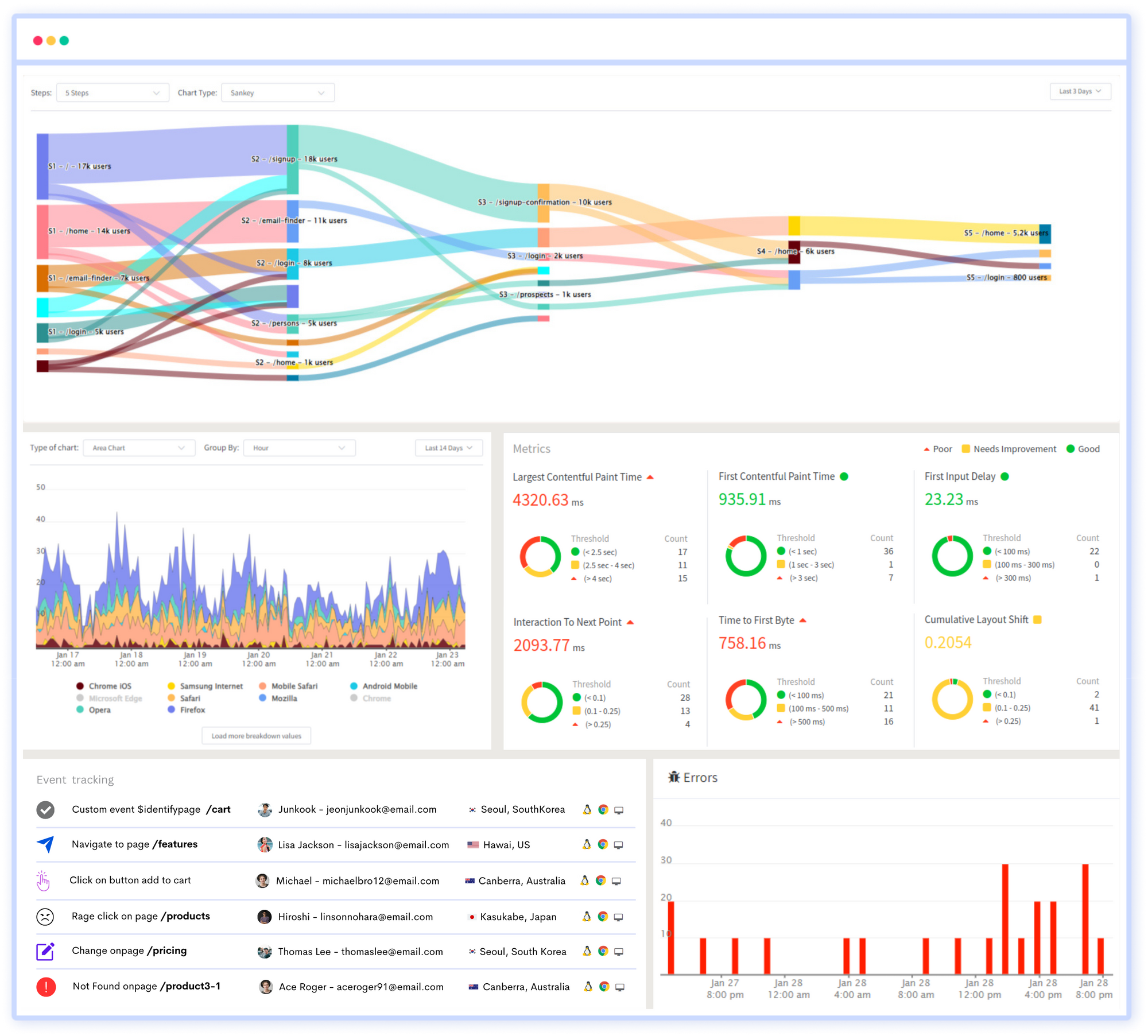
Customer journey analysis and conversion funnels of ReplayBird to analyze deeper into user journeys, identify where drop-offs occur, and uncover conversion blockers.
Troubleshooting is now simpler with ReplayBird's robust debugging features. Detect and diagnose UX issues quickly, ensuring a seamless user journey from start to finish.
With ReplayBird, you have the ultimate toolkit to elevate your conversion rate to the next level. The platform empowers you to create high-performing, user-centric applications that leave a lasting impression.
Try ReplayBird 14-days free trial
Read More about Conversion
